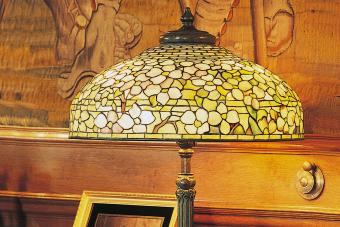
An antique hammer mill is an old piece of farm or mill equipment used for crushing material such as rocks, grain, wood or waste material.
How it Works
A hammer mill uses forceful impact to pulverize material through a high speed rotating disc that has a fixed number of hammer bars. The hammer bars are swung outward by centrifugal force. Material is fed in and then thrown out centrifugally and is crushed by being beaten between the hammer bars or against the breaker plates that are fixed inside of the casing.
The material is pulverized until it is small enough to fall through the screen which forms the lower part of the casing. Hard materials won't damage the hammer mill because the bars are hinged. When the bars become worn out, they are replaced with new bars.
Hammer mills are capable of crushing brittle materials as well as fibrous materials. When crushing fibrous material, a screen with cutting edges can be used. The size of the crushed material depends on the size of the screen and the rotation speed.
Uses for Hammer Mills
While the most common use for hammer mills is agriculturally based, these machines were also designed for industrial, research and residential applications.
Industrial uses for hammer mills can include producing pulp for paper production, grinding grain for biofuel production and grinding wood scrap into mulch for manufacturing wood pellets for fuel. An automobile junkyard uses large hammer mills for grinding scrap metal into small pieces which can be separated for recycling purposes. Other types of hammer mills are used to break down asphalt, electronics and old tires for the purpose of recycling this material.
The smallest type of hammer mills can actually fit on a tabletop or counter. A laboratory might use a hammer mill to grind material for an experiment. Small hammer mills can also be used to grind foods or spices.
Hammer Mill Brands
Many different designs of hammer mills have been produced over the years. In the 1920s, hammer mills became a popular alternative to the traditional burr mills and feed grinders of the time. The hammer mill was faster at reducing small grains to a very fine consistency without wearing out machine parts. New manufacturers and new models of hammer mills continued to be produced throughout the 1930s. However, the Great Depression and World War II took a toll on the production of new farm equipment, which all but ceased completely during the war.
There were a number of manufacturers who made agricultural hammer mills, including:
- John Deere
- David Bradley
- Wetmore
- Sears Roebuck
- Montgomery Ward
- Fairbanks-Morse
- Gehl
- Bearcat
These are the types of common brand names you will come across when looking to buy a hammer mill.
Value of Antique Hammer Mills
The value of an antique hammer mill will depend largely on its current working condition. Most old hammer mills you will find for sale are large, odd looking pieces of equipment that don't really have much aesthetic appeal to a collector. If an antique hammer mill does not work at all, there is probably little to no value in it.
If you do happen to have or inherit an old hammer mill in good working condition, you may be able to get anywhere from $200-$500, depending on the condition and depending on what a potential buyer would be willing to pay for it. This estimate is based on recent online ads and auctions that sellers have posted for their old hammer mills.
Where to Buy or Sell
A hammer mill is a specialized piece of equipment that you will probably have better luck selling or finding on forums that deal with the topic of antique farm equipment and tractors. You can try the following online resources:
You can also try eBay as a resource for antique farm equipment.
An antique hammer mill may be harder to come by than some antique collectibles. Though there may not be much aesthetic appeal to this type of antique, hammer mills have certainly contributed throughout history.







